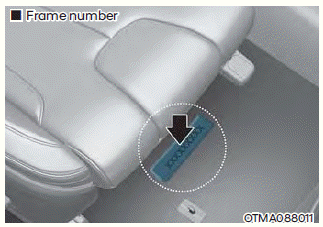Hyundai Santa Fe: Electronic Stability Control (ESC) / ESC operation
ESC ON condition
When the Engine Start/Stop button is in the ON position, ESC and the ESC OFF indicator lights illuminate for approximately three seconds. After both lights go off, ESC is enabled.
When operating
.png)
When ESC is in operation, the ESC indicator light blinks:
- When you apply your brakes under conditions which may lock the wheels, you may hear sounds from the brakes, or feel a corresponding sensation in the brake pedal. This is normal and it means your ESC is active.
- When ESC activates, the engine may not respond to the accelerator as it does under routine conditions.
- If Cruise Control was in use when ESC activates, Cruise Control automatically disengages. Cruise Control can be reengaged when the road conditions allow. See “Cruise Control System” later in this chapter (if equipped).
- When moving out of the mud or driving on a slippery road, the engine rpm (revolutions per minute) may not increase even if you press the accelerator pedal deeply. This is to maintain the stability and traction of the vehicle and does not indicate a problem.
ESC OFF condition
.png)
To cancel ESC operation:
- State 1
Press the ESC OFF button briefly. The ESC OFF indicator light and/or message 'Traction Control disabled' will illuminate. In this state, the traction control function of ESC (engine management) is disabled, but the brake control function of ESC (braking management) still operates.
- State 2
Press and hold the ESC OFF button continuously for more than 3 seconds. The ESC OFF indicator light and/or message 'Traction & Stability Control disabled' illuminates and a warning chime sounds. In this state, both the traction control function of ESC (engine management) and the brake control function of ESC (braking management) are disabled.
If the Engine Start/Stop button is pressed to the OFF position when ESC is off, ESC remains off. Upon restarting the vehicle, ESC will automatically turn on again.
Indicator lights
.png)
When the Engine Start/Stop button is pressed to the ON position, the ESC indicator light illuminates, then goes off if the ESC system is operating normally.
The ESC indicator light blinks whenever ESC is operating.
If the ESC indicator light stays on, your vehicle may have a malfunction with the ESC system. When this warning light illuminates have the vehicle be checked by an authorized HYUNDAI dealer as soon as possible.
The ESC OFF indicator light comes on when ESC is turned off.
WARNING
When ESC is blinking, this indicates ESC is active:
Drive slowly and NEVER attempt to accelerate. NEVER turn ESC off while the ESC indicator light is blinking or you may lose control of the vehicle resulting in an accident.
NOTICE
Driving with wheels and tires with different sizes may cause the ESC system to malfunction. Before replacing tires, make sure all four tires and wheels are the same size. Never drive the vehicle with different sized wheels and tires installed.
 Electronic Stability Control (ESC)
Electronic Stability Control (ESC)
Electronic Stability Control helps to stabilize the vehicle during cornering
maneuvers.
ESC checks where you are steering and where the vehicle is actually going...
 ESC OFF usage
ESC OFF usage
When Driving
The ESC OFF mode should only be used briefly to help free the vehicle if stuck
in snow or mud, by temporarily stopping operation of ESC, to maintain wheel torque...
Other information:
Hyundai Santa Fe (TM) 2019-2025 Owner's Manual: System settings
Setting functions for the system Parking Safety With the engine on, select or deselect ‘Driver Assistance → Parking Safety’ from the Settings menu to set whether or not to use each function. -- If ‘Rear Active Assist’ (or ‘Active rear assist’) is selected, the system will warn the driver and assist with braking when a collision with a pedestrian or an object is imminent...
Hyundai Santa Fe (TM) 2019-2025 Service Manual: Components and components location
..
Categories
- Manuals Home
- 4th Generation Santa Fe Owners Manual
- 4th Generation Santa Fe Service Manual
- Head-up display settings
- Power adjustment
- Smart liftgate
- New on site
- Most important about car
Vehicle Identification Number (VIN). Vehicle certification label. Tire specification and pressure label
Vehicle Identification Number (VIN)

The vehicle identification number (VIN) is the number used in registering your vehicle and in all legal matters pertaining to its ownership, etc.
The number is punched on the floor under the passenger seat. To check the number, open the cover.
